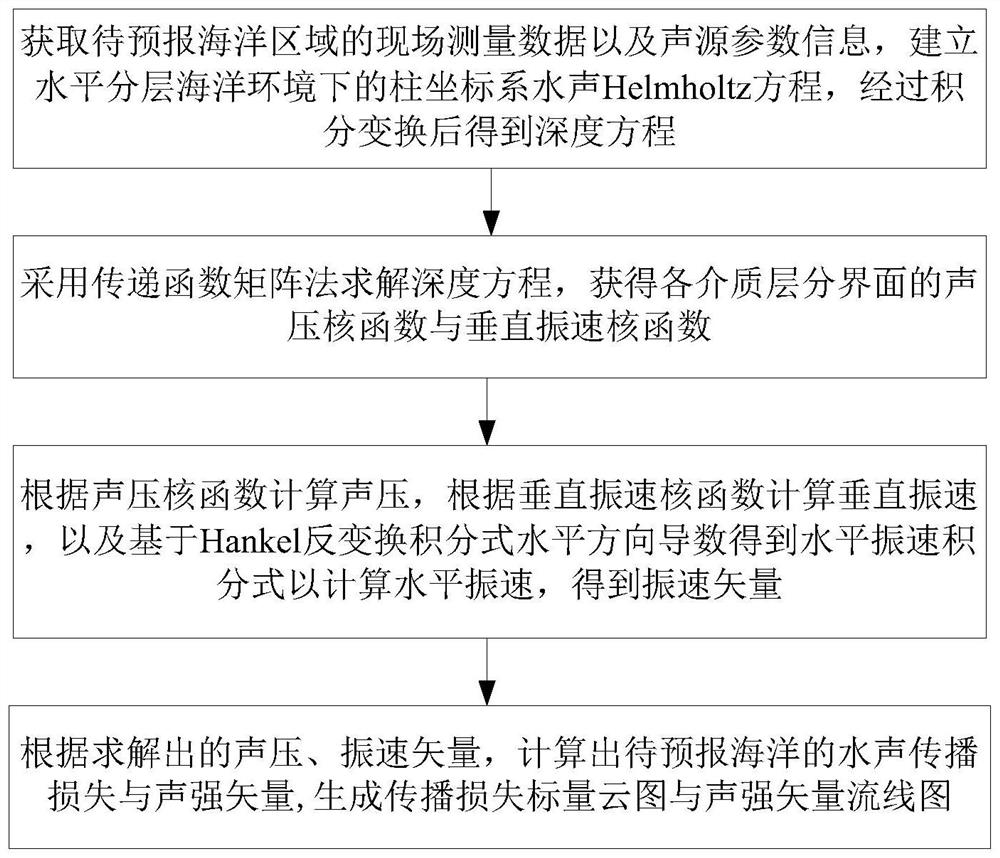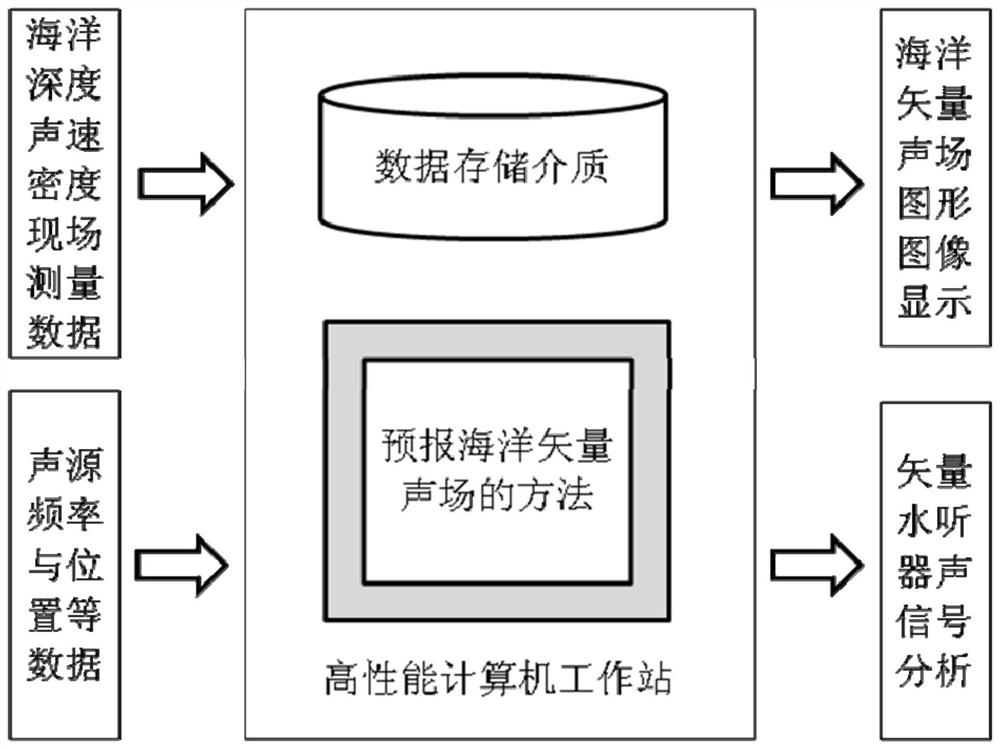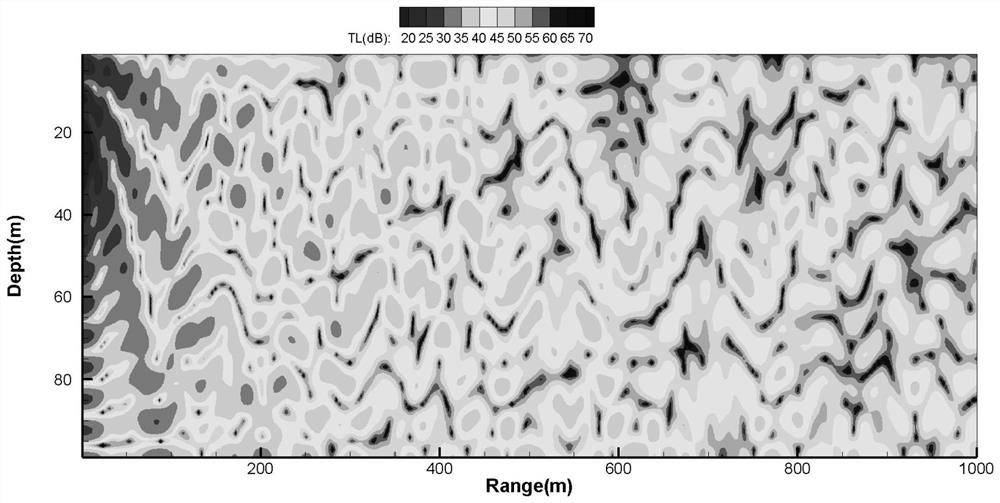A method, system and medium for predicting ocean vector sound field
A vector and ocean technology, applied in the field of ocean vector sound field forecasting, can solve the problems of sound pressure derivative numerical error, sound field grid spacing limitation, sound field vector calculation amount and the adverse influence of the flexibility of calculation methods, etc., to avoid numerical errors, improve The effect of forecast accuracy
- Summary
- Abstract
- Description
- Claims
- Application Information
AI Technical Summary
Problems solved by technology
Method used
Image
Examples
Embodiment Construction
[0100]The present invention will be further described below with reference to the accompanying drawings and specific preferred embodiments, but the protection scope of the present invention is not limited thereby.
[0101] This embodiment specifically takes the sound field prediction in the marine environment of the absolute hard seabed isokinetic waveguide as an example, and the parameters are specifically: the uniform density of seawater ρ w =1.0g / cm 3 , the speed of sound in water is uniform c w =1500m / s, seabed level and sea depth z N =100m, depth z-direction step dz=1m, maximum solution distance in r-direction is r max =1000m, step size Δr=1m. Sound source frequency f=100Hz, sound source depth z s = 25m, upper boundary (sea surface z 0 =0m) take the pressure release boundary condition (sound pressure is zero), the lower boundary (seabed z N = 100m) to take the absolute hard boundary condition (the z derivative of the sound pressure is zero).
[0102] like figure 1...
PUM
 Login to View More
Login to View More Abstract
Description
Claims
Application Information
 Login to View More
Login to View More - R&D
- Intellectual Property
- Life Sciences
- Materials
- Tech Scout
- Unparalleled Data Quality
- Higher Quality Content
- 60% Fewer Hallucinations
Browse by: Latest US Patents, China's latest patents, Technical Efficacy Thesaurus, Application Domain, Technology Topic, Popular Technical Reports.
© 2025 PatSnap. All rights reserved.Legal|Privacy policy|Modern Slavery Act Transparency Statement|Sitemap|About US| Contact US: help@patsnap.com



